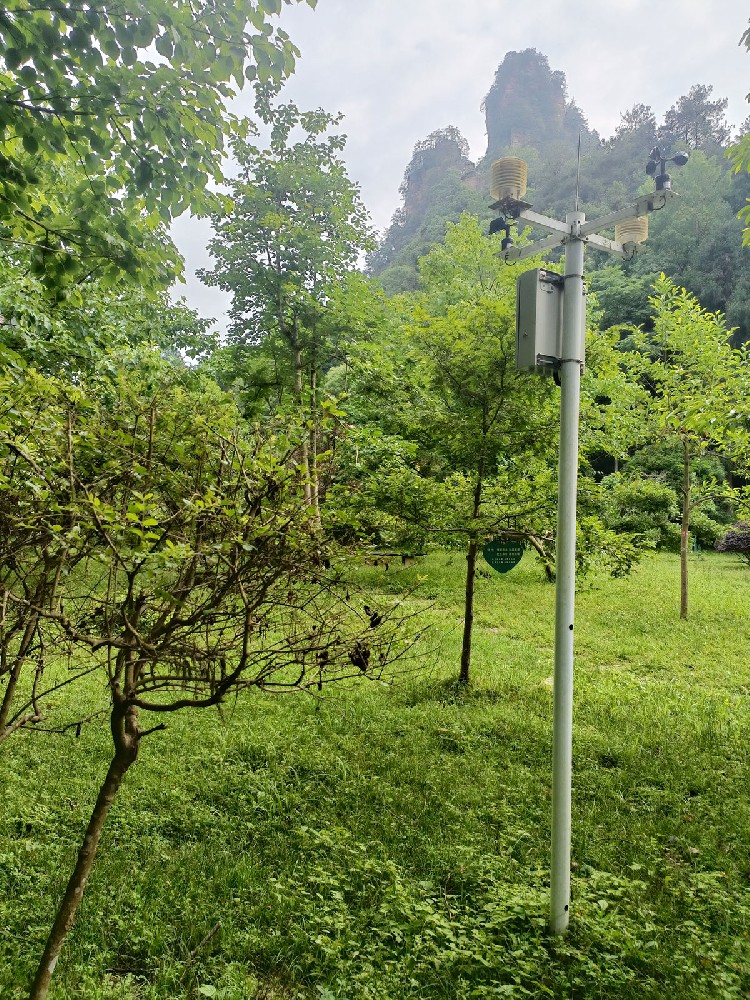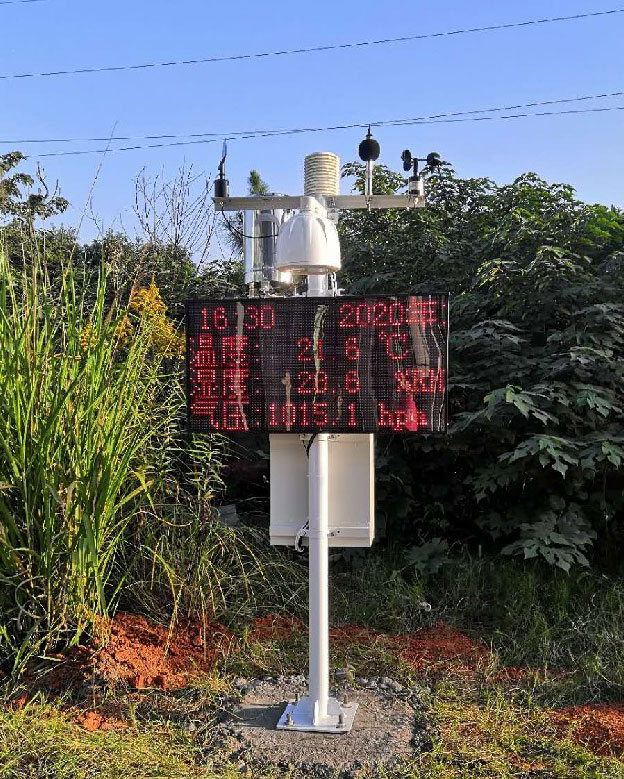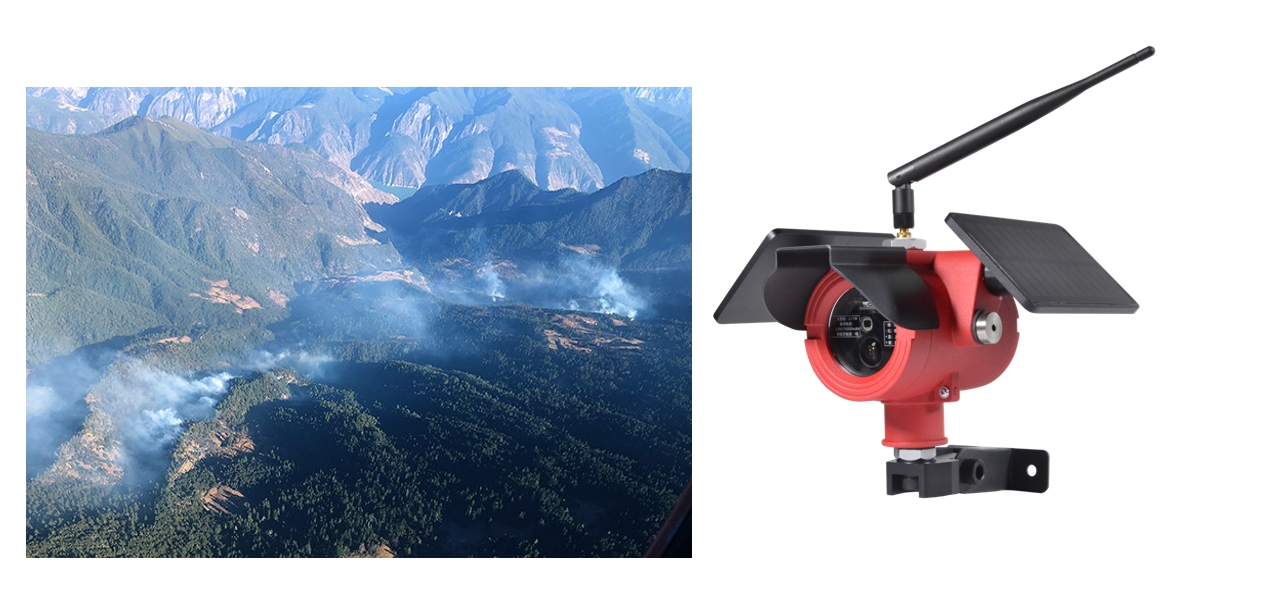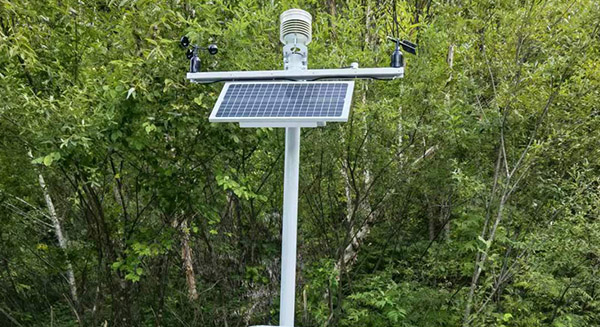

— Blogs —
—Products—
 Consumer hotline +8618073152920
Consumer hotline +8618073152920 WhatsApp:+8615367865107
Address:Room 102, District D, Houhu Industrial Park, Yuelu District, Changsha City, Hunan Province, China
Product knowledge
Time:2025-10-11 13:44:21 Popularity:474
Forests are the lungs of the Earth, bearing immense ecological functions and resource values. However, the vast and complex forest environments make manual patrols and traditional management methods inefficient, struggling to cope with sudden forest fires and pests. Deploying industrial-grade IoT weather stations is the core of building a smart forestry system, achieving precise, efficient, and sustainable management.
IoT weather stations deployed at key microclimate points in the forest can continuously collect and transmit data 24 hours a day, providing forestry managers with a "digital twin" of the forest environment.

The data collected by weather stations is not just temperature and rainfall, but indicators of dynamic changes in the forest environment:
Fire Risk Three Elements: Real-time monitoring of wind speed, wind direction, air temperature, and humidity. These data are the core inputs for calculating forest fire danger levels. High-precision wind speed and direction data can predict the direction of fire spread.
Soil and Water Conservation Monitoring: Integrated rainfall intensity sensors and soil moisture sensors in weather stations are used to analyze the interception capacity of forest catchment areas against heavy rain and soil runoff risks, providing scientific basis for soil and water conservation projects.
Pathogen Environment: Monitoring temperature and humidity conditions closely associated with the occurrence and spread of specific forest pests and diseases (such as pine wood nematode disease and tree tip blight), enabling early risk assessment.
Practical Application Case: How Weather Stations Achieve Millisecond-Level Forest Fire Warnings
Among all smart forestry applications, the forest fire warning system is the most critical and value-demonstrating application of IoT weather stations.
Case Analysis: Early Identification and Response to Forest Fire Risks

In a key protection forest area, IoT weather stations, video surveillance, smoke sensors, and management platforms form a three-dimensional prevention and control network:
1. Fire Risk Model Calculation: Real-time data from weather stations (such as humidity below 30%, wind speed exceeding 5m/s, temperature above 35°C) is input into the dynamic forest fire model. The system detects that the fire risk index is trending upward to "extremely high" within 3 hours.
2. Linkage Response: The system immediately sends high-priority warnings to forestry managers. At the same time, the system activates automatic patrols on high-definition cameras in the risk area and guides drones to focus on monitoring potential high-risk zones (such as lightning strike points or areas with frequent human activity).
3. Results: This predictive warning mechanism based on meteorological data significantly shortens the time from fire risk occurrence to response, transforming the traditional "post-fire detection and suppression" into "preemptive intervention before fire risk formation," effectively reducing the probability of large-scale forest fires.
Benefits and Outlook: Digital Transformation for Sustainable Forestry Management
The application of IoT weather stations is a key tool for achieving scientific and sustainable management of forestry resources.
1. Resource Protection: Through precise pest and fire warnings, forest resource losses are significantly reduced, protecting the biodiversity of forest ecosystems.
2. Scientific Decision-Making: Long-term accumulated meteorological and environmental monitoring data provide scientific basis for forestry departments in tree species selection, afforestation, and harvesting planning, ensuring sustainable utilization of forestry resources.
3. Cost Reduction: Reduces the frequency of manual patrols in high-risk areas and the investment in large-scale firefighting.

Niubol provides high-protection-grade IoT weather stations specially designed for complex forest environments:
Weather-Resistant Design: UV-resistant, anti-corrosion housing, lightning protection, and high/low temperature resistance.
Self-Powering System: Efficient solar panels + large-capacity lithium batteries, ensuring continuous operation even in continuous rainy days.
Cloud Platform Integration: Remote monitoring, data analysis, and fire risk model visualization, easily achieving "cloud-based forest management."
Niubol provides high-protection-grade IoT weather stations that meet forestry standards. Our solutions feature strong weather resistance, high self-powering capability, and stable data transmission, making them a reliable choice for your smart forestry projects.
Contact Us Now: Partner with our forestry experts to customize the most advanced forest environment monitoring and disaster warning solutions.
Click to Learn More About Our Industrial-Grade IoT Weather Stations: www.niubol.com

A: Considering that forest areas often lack stable power and networks, our weather stations use a combination of solar panels and large-capacity batteries to ensure stable operation even on cloudy days. For communication, we provide LoRa or 4G modules to guarantee data transmission stability and reliability in remote forest areas.
A: Yes. Our forestry weather stations adopt industrial-grade reinforced design, with housings made of UV-resistant and corrosion-resistant materials. Key components include built-in lightning and overvoltage protection devices. The design can withstand low temperatures in frigid regions, strong winds in high-altitude areas, and UV exposure, ensuring data continuity.
A: Although weather stations do not directly measure carbon sinks, the light, temperature, humidity, and rainfall data they provide are key input parameters for forest vegetation growth models and carbon cycle models. Through this data, forestry departments can more accurately assess the growth rates and carbon absorption potential of trees in specific areas, providing data support for carbon sink trading.
The future of smart forestry cannot be separated from the support of the Internet of Things. IoT weather stations are not just data collection terminals, but the core hub connecting "ecological perception—risk warning—scientific decision-making." With professional sensing technology and engineering capabilities, Niubol empowers global forestry to achieve a comprehensive upgrade from experience-based management to data-driven management.
Prev:Disadvantages of Solar Insect Trap
Next:Multi-Crop Monitoring Systems with IoT Agriculture Sensors
Related recommendations
Sensors & Weather Stations Catalog
Agriculture Sensors and Weather Stations Catalog-NiuBoL.pdf
Weather Stations Catalog-NiuBoL.pdf
Related products
 Combined air temperature and relative humidity sensor
Combined air temperature and relative humidity sensor Soil Moisture Temperature sensor for irrigation
Soil Moisture Temperature sensor for irrigation Soil pH sensor RS485 soil Testing instrument soil ph meter for agriculture
Soil pH sensor RS485 soil Testing instrument soil ph meter for agriculture Wind Speed sensor Output Modbus/RS485/Analog/0-5V/4-20mA
Wind Speed sensor Output Modbus/RS485/Analog/0-5V/4-20mA Tipping bucket rain gauge for weather monitoring auto rainfall sensor RS485/Outdoor/stainless steel
Tipping bucket rain gauge for weather monitoring auto rainfall sensor RS485/Outdoor/stainless steel Pyranometer Solar Radiation Sensor 4-20mA/RS485
Pyranometer Solar Radiation Sensor 4-20mA/RS485
Screenshot, WhatsApp to identify the QR code
WhatsApp number:+8615367865107
(Click on WhatsApp to copy and add friends)
